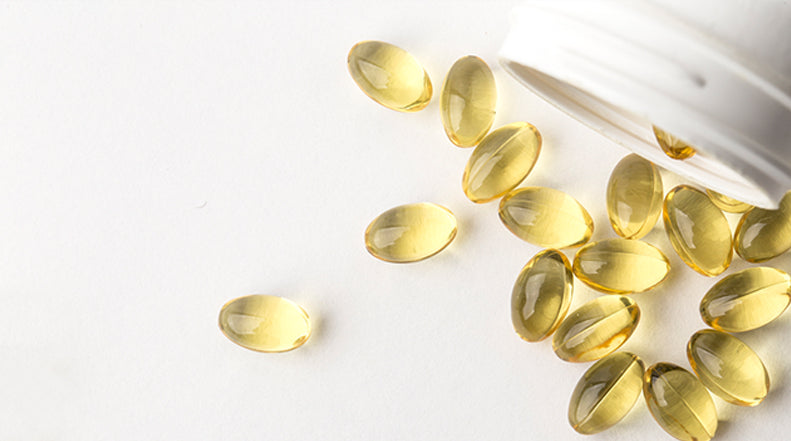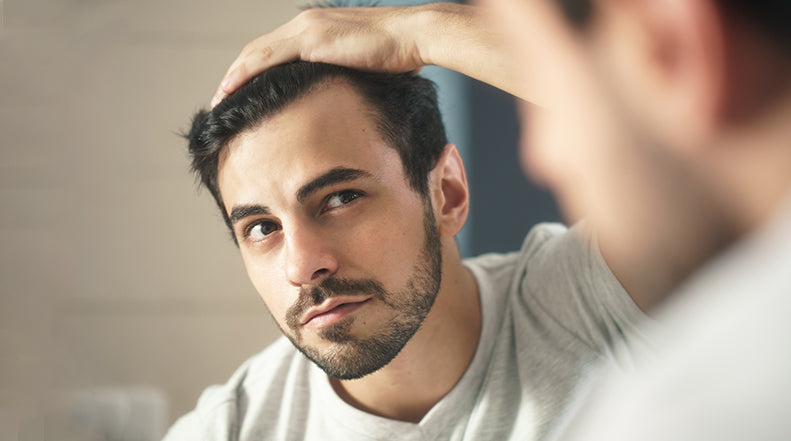Can Vitamin D Actually Help With Scarring?

Taking an adequate dose of vitamins has been known to keep your body supplied with essential nutrients that you might not receive from your everyday diet. Adding a multivitamin to your routine helps to take the pressure off to be certain that your daily diet is offering the proper nutrients needed to stay healthy.
The benefits of taking vitamins is now widening to include helping burns and preventing scars. The scientific evidence behind this is quite new and studies are still being completed to find out how true this is. However, if the addition of an inexpensive, over-the-counter vitamin can really help with scarring and burns, those battling these issues might be extremely attentive to this news.
WHAT IS VITAMIN D?
Before getting into the new studies, let’s talk about what vitamin D is.
Vitamin D is an important fat soluble vitamin, but unfortunately is present in very few foods. The good news is that your body can produce its own vitamin D when UV rays from sunlight hit the skin and trigger vitamin D synthesis.
HOW IS VITAMIN D HELPFUL?
Vitamin D has many benefits that are vital to your overall health. This vitamin promotes the absorption of calcium into the bones and therefore is extremely helpful in creating a healthy bone structure. It is even more important in your older years to be sure to have a healthy intake of vitamin D in your diet. Without it, there is a greater risk of developing osteoporosis. Which is the thinning of bones that makes them more susceptible to breaking. This risk can be reduced by taking vitamin D.
There is new evidence that even points to low vitamin D levels leading to an increased risk of type 1 diabetes. Other less serious effects linked to deficiencies of vitamin D are muscle and bone pain. Vitamin D can also help to lower overly high blood pressure.
VITAMIN D CAN HELP BURNS AND SCARS TO HEAL
New studies are showing that vitamin D supplements can help speed up the time taken for burns to heal and help to protect the skin against consequences of burns. There have been previous studies on this vitamin, which yielded the findings that vitamin D helps reduce the amount of inflammation and redness that is found on the skin after sunburn.
Research from the Birmingham University (United Kingdom) has found that vitamin D can actually help to fight the consequences of burns. This is the first study of its kind concerning vitamin D. The researchers involved in this study monitored patients who suffered serious burns for one full calendar year. The researchers recorded each of the patient’s varying vitamin D levels. It was found that the patients with the highest levels of vitamin D had much better wound healing, fewer complications and less scarring. The patients who had lower vitamin D levels had far worse outcomes concerning the healing of their burns. These results suggest that giving vitamin D supplements to burn victims is a simple and extremely cost effective treatment option.
Vitamin D has also been assessed in studies with severe scarring. With severe burns to the skin, the vitamin D levels are dramatically lowered. It is important to add vitamin D back into the patient’s system to help heal the burn and reduce scarring. The amount of vitamin D lost is in no way related to the severity of the burn though. This means that less severe burns could also create the same amount of vitamin D loss. As the scientific investigation behind this study accelerates, it is expected that there will be more answers added in the near future.
Another benefit of vitamin D is the activation of higher levels of antibacterial components. This is something that helps to fight infection, speeding up the healing process and improving the outcome for patients with severe burns.
HOW MUCH VITAMIN D IS SUFFICIENT?
Vitamin D deficiency is actually one of the most common deficiencies. In fact, up to 42% of the adult population in the United States has low vitamin D levels. If you happen to be someone who is exposed to an abundance of sun, this may be enough alone to give you sufficient vitamin D. However, if you live in the far north where winter decreases the amount of sun exposure, your vitamin D levels will actually fluctuate depending on the season.
How much vitamin D someone needs to take is highly dependent upon age, race, latitude, season, sun exposure, clothing and more. The U.S. Institute of Medicine suggests that between 10-20 micrograms daily is adequate for 97.5% of individuals. Studies also show that the less sun you are exposed to, the more vitamin D you will need to ingest.
The recommended dietary allowance is as follows: (* IU: International Units)
- Infants age 0 to 6 months: adequate intake, 400 IU/day; maximum safe upper level of intake, 1,000 IU/day
- Infants age 6 to 12 months: adequate intake, 400 IU/day; maximum safe upper level of intake, 1,500 IU/day
- Age 1-3 years: adequate intake, 600 IU/day; maximum safe upper level of intake, 2,500 IU/day
- Age 4-8 years: adequate intake, 600 IU/day; maximum safe upper level of intake, 3,000 IU/day
- Age 9-70: adequate intake, 600 IU/day; maximum safe upper level of intake, 4,000 IU/day
- Age 71+ years: adequate intake, 800 IU/day; maximum safe upper level of intake, 4,000 IU/day
Many researchers are saying that clinicians are overlooking the levels of vitamin D in burn victims even though it is now found to greatly influence the healing process. If you are recovering from any burn, be sure to speak with your doctor concerning your vitamin D levels, especially if you have recently been severely burned.




Comments